Meat is a delicious and versatile ingredient that can be used in countless dishes. However, buying and storing meat can be a daunting task, especially with so many different types of meat and cuts available. In this guide, we’ll cover everything you need to know to buy and store meat like a pro.
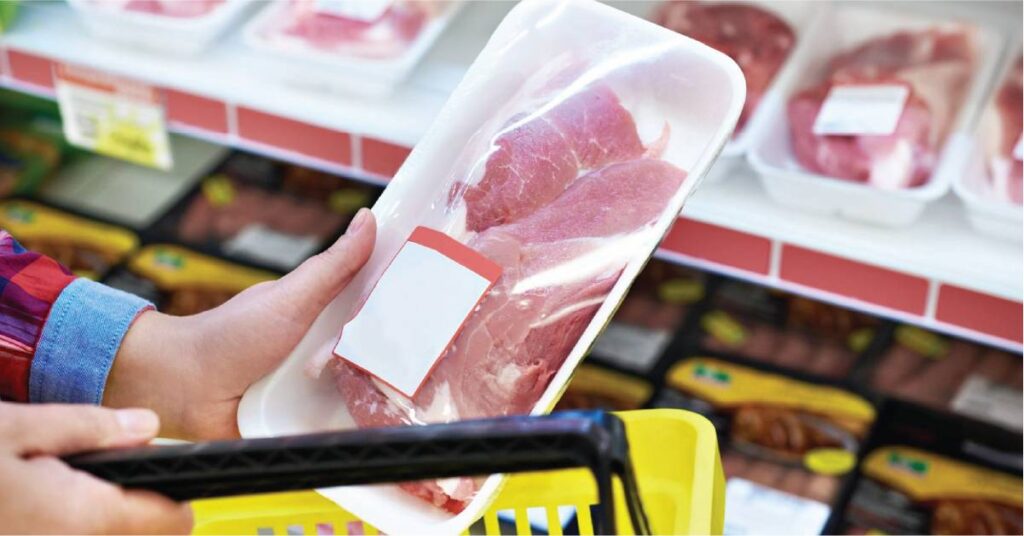
When it comes to buying meat, whether it is fresh or frozen, here’s how to tell if meat is fresh and a few key things to keep in mind:
The quality of the meat you buy is important for both flavor and safety.
✔ Look for meat that is bright in color and has minimal blemishes or discoloration.
✔ The meat should also have a fresh smell. If it smells sour or rancid, it may be spoiled.
When it comes to beef, marbling (thin strips of fat throughout the meat) is considered a good thing. It adds flavor and helps keep the meat tender during cooking. On the other hand, too much fat can make the meat greasy and unappetizing.
For poultry, look for meat that is plump and free from bruises or discoloration. The skin should be smooth and unbroken.
Different cuts of meat are suitable for different dishes. When buying meat from a meat supplier, consider what you plan to use it for and choose the appropriate cut.
Different cuts of meat are suitable for different cooking methods. For example, tougher cuts like chuck or brisket are best for slow cooking, while leaner cuts like tenderloin or sirloin are better for grilling or pan-frying.
When buying beef, consider the following cuts:
When buying poultry, consider the following cuts:
Buy only the amount of meat you need. This will help you avoid waste and save money. If you need to buy meat in bulk, consider buying from a frozen meat supplier like The Good Meat, who offers high-quality frozen meat products at competitive prices.
Storing meat properly is crucial to prevent spoilage and food-borne illnesses. Here’s what you need to know to keep the freshness of your meat;
Raw meat should always be stored at a temperature below 40°F (4°C) to slow bacterial growth and preserve freshness. For home refrigerators, store meat on the bottom shelf where it’s coldest and separate from other foods.
If you’re transporting meat, make sure it stays cold by using a cooler or insulated bag with ice packs.
Meat should be stored in its original packaging or wrapped tightly in plastic wrap or aluminum foil. This will help prevent air from getting in and keep the meat fresh. At The Good Meat, we take extra care to ensure that our meat products are packaged properly to maintain their quality.
If you don’t plan to cook meat within a few days of purchase, freeze it immediately. Freezing meat at home can extend its shelf life by several months.
To freeze meat, wrap it tightly in freezer-safe packaging and label it with the date. If you have a vacuum sealer, this is an even better way to package meat for freezing. Make sure to remove as much air as possible before sealing.
Keep in mind that meat can last up to one year in the freezer but may lose quality over time. If you’re unsure about the quality of frozen meat, check for signs of freezer burn (white or gray patches on the surface of the meat).
When defrosting meat, do so in the refrigerator or microwave. Never defrost meat at room temperature, as this can promote bacterial growth.
Before you proceed with properly storing your meat products, make sure that all the containers and kitchen utensils that you will use for preparation are sanitized and clean. You cannot compromise your health.
To prevent the spread of harmful bacteria, it’s important to replace kitchen essentials like towels and sponges regularly. Using dirty sponges and towels to wash dishes and cutting boards can actually cause the bacteria to multiply.
Additionally, sponges and towels are breeding grounds for disease-causing pathogens, which is why it’s important to clean your sponge thoroughly every other day and replace it at least once a week.
Buying and storing meat doesn’t have to be complicated. By following these simple tips, you can ensure that your meat stays fresh and safe to eat. And if you’re looking for a reliable meat supplier that offers high-quality fresh and frozen meat products, look no further.
Visit The Good Meat’s online meat shop to explore premium quality meat.
Known as one of the happiest places on earth, the Philippines is well-known for extravagant feasts during the holiday season.
With the Filipino’s rich gastronomic culture and strong family ties, it’s no surprise that we spare no expense when it comes to picking excellent dishes that each family member will enjoy.
This article will give you a brief overview of the top Filipino dishes to serve during the holiday season.
Add these to your menu and let your celebration be extra sweet, warm, and delightful!
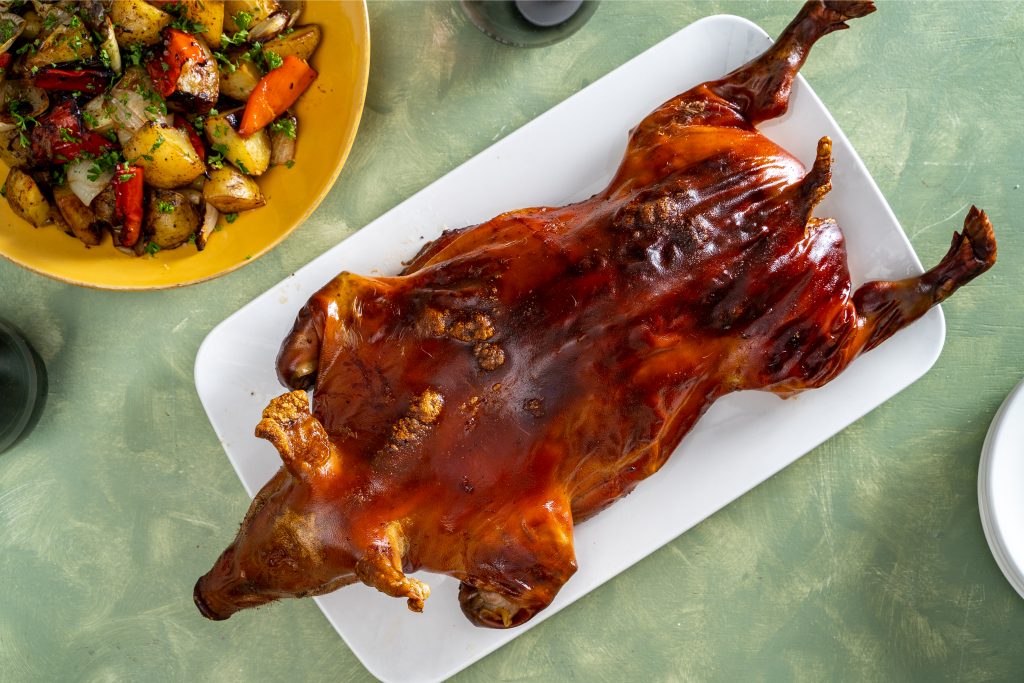
Cochinillo, commonly known as Roast Suckling Pig, is a traditional Spanish dish famous in the historic city of Segovia.
The Cochinillo has succulent meat, tender and crispy skin, a thin layer of fat, and is flavorful inside. Suckling pigs are typically smaller, about one-third than the standard pig size.
In Spain, local chefs use a plate instead of a knife to show how delicate and off the bone this dish is – the main reason why it melts in your mouth!
Cochinillo is a perfect centerpiece to rule your holiday table. Cochinillo is festive. It means a glorious celebration. And when our family knows about having Cochinillo at the table, no doubt everyone puts a smile on their faces, starts giggling, and shifts to an instant holiday feel!
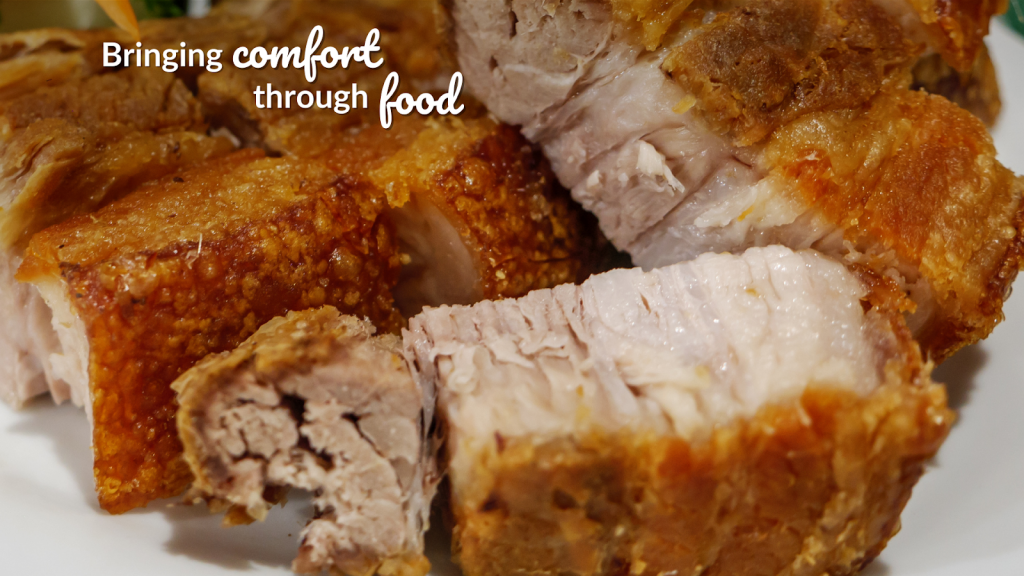
Lechon Kawali is one of the most excellent and all-time favorite pork dishes around the world during the holiday season. Its name was derived from the traditional cooking pan used to cook it – wok or Kawali.
It is a pork belly or liempo deep-fried to golden perfection – crunchy on the outside (especially when a little blistered) and moist inside. Lechon Kawali’s interchanging layer of meat and fat blends perfectly upon biting, making it juicer and tastier. No wonder every family member always looks for it at the table during holidays.
To fully enjoy it, serve it with cane vinegar, liver sauce, and mayo dip with plenty of onions and cucumbers on the side.
Like Cochinillio, Celebration Ham is very popular as a holiday centerpiece, especially during Christmas.
The Christmas Ham, also known as Yule Ham, came from an English tradition specifically from Germans who wanted to appease Freyr, the God of fertility, harvest, and boars. As Christianity spread worldwide, Christmas influences us, including Celebration Ham as a staple dish during holidays.
Today, Celebration Hams has various flavors such as Hickory-smoked, Honey-cured, and Sugar-cured.
There are plenty of ways on how to relish it – make thin slices while reminiscing, chatting, and having a toast of wine, top it with Queso De Bola, or stuff your pandesal and ensaymada with it. For leftovers, make thin slices or bites and pair it with Sinangag, Egg, Black Coffee, and have an extended merry day!
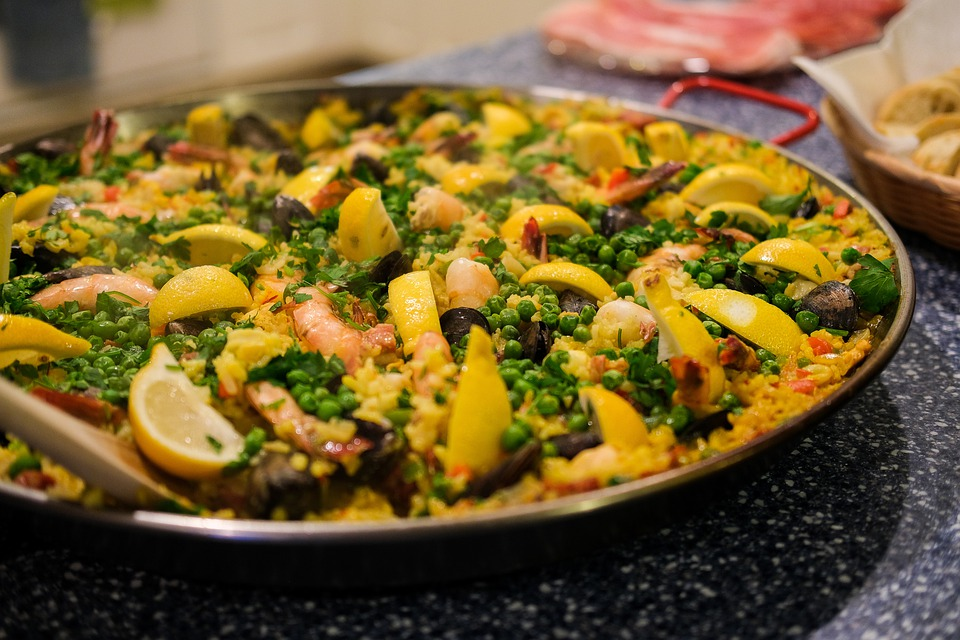
As Filipino culture is heavily influenced by Spanish culture, Paella, a classic rice dish from Spain, is another addition to your holiday menu.
The dish consists of vegetables, protein, and arborio rice, a staple for most Filipino dishes. It is a classic favorite at Christmas parties, family reunions, and other holiday celebrations because of its beautiful aroma, which is only enhanced because it’s scooped out of a communal pan for consumption around the table with the family.
There are several Paella varieties such as Chicken Paella, Seafood Paella, or Mixed Paella (a combination of seafood, meats, and vegetables).
Make this coming Christmas extra special with this iconic rice dish – nutritious, grand, and refreshing from all the meat dishes dominating the season!
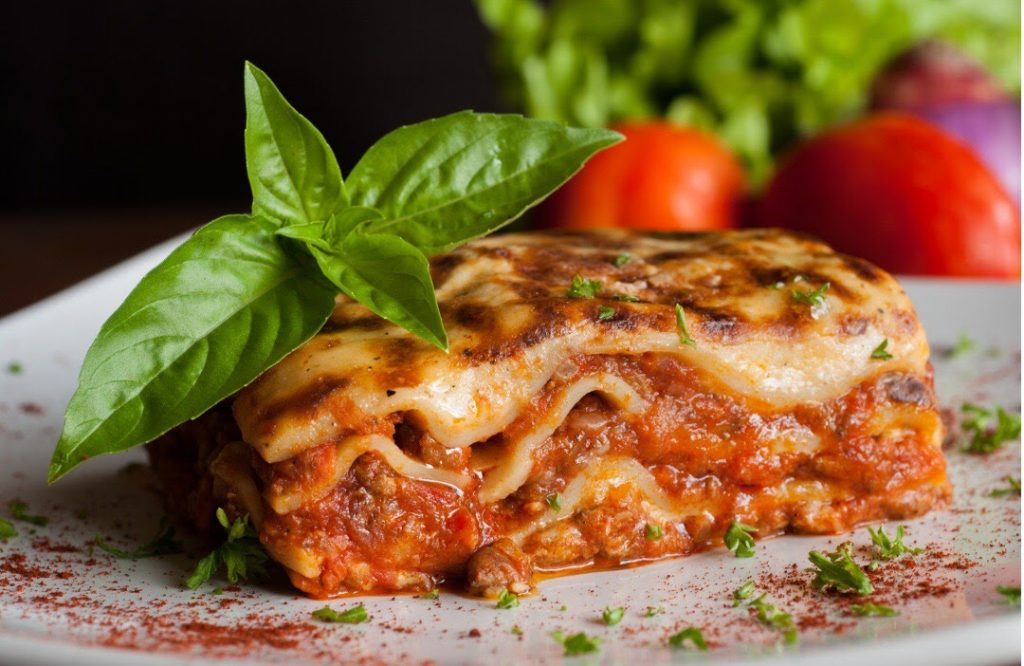
Who says spaghetti gets all the fun? Alternating layers of flat and wide noodles with lean ground beef — lasagna is known as a tasty favorite for most Filipino families.
Lasagna is a classic holiday-time meal, not only in the Philippines but also in other countries. It is a simple yet popular pasta meal characterized by a series of layers with homemade meat sauce and a combination of ingredients like ricotta cheese mixture.
Contrary to popular belief, you do not need expensive ingredients to serve it. The ingredients are almost the same as classic Filipino-style spaghetti, except for the lasagne pasta. Simply combine ground beef and tomato sauce, and you’re good to go.
Most Filipino kids remember holiday Lasagna as a traditional Christmas Eve dinner growing up, primarily because it is great to serve at a holiday buffet party — slice it up in serving portions and let guests help themselves.
Filipino holiday celebrations are not complete without meat as a key ingredient like the list above.
Many believe that meat symbolizes wealth and prosperity, but beyond that, it shadows beautiful relationships with our loved ones!
To achieve healthy, safe, and more sumptuous meat dishes, always pick fresh and high-quality meat.
Visit your trusted meat shop in the Philippines today because you deserve a splendid and memorable holiday season!
Noche Buena has been one of the most significant celebrations globally, especially for Filipinos. Filipino families gather to celebrate Christ’s birth with their favorite dishes.
Noche Buena, which means “the Good Night” in Spanish, refers to Christmas Eve or the 24th of December celebrated every year.
It all started in the 16th century when the Spanish friars required churchgoers to practice fasting until Christmas morning. Since the natives feel hungry coming from the Christmas midnight mass (the first liturgy of Christmastide), they gather for a nocturnal feast before bed.
Here are five delicious dishes that you can add to your Noche Buena feast.
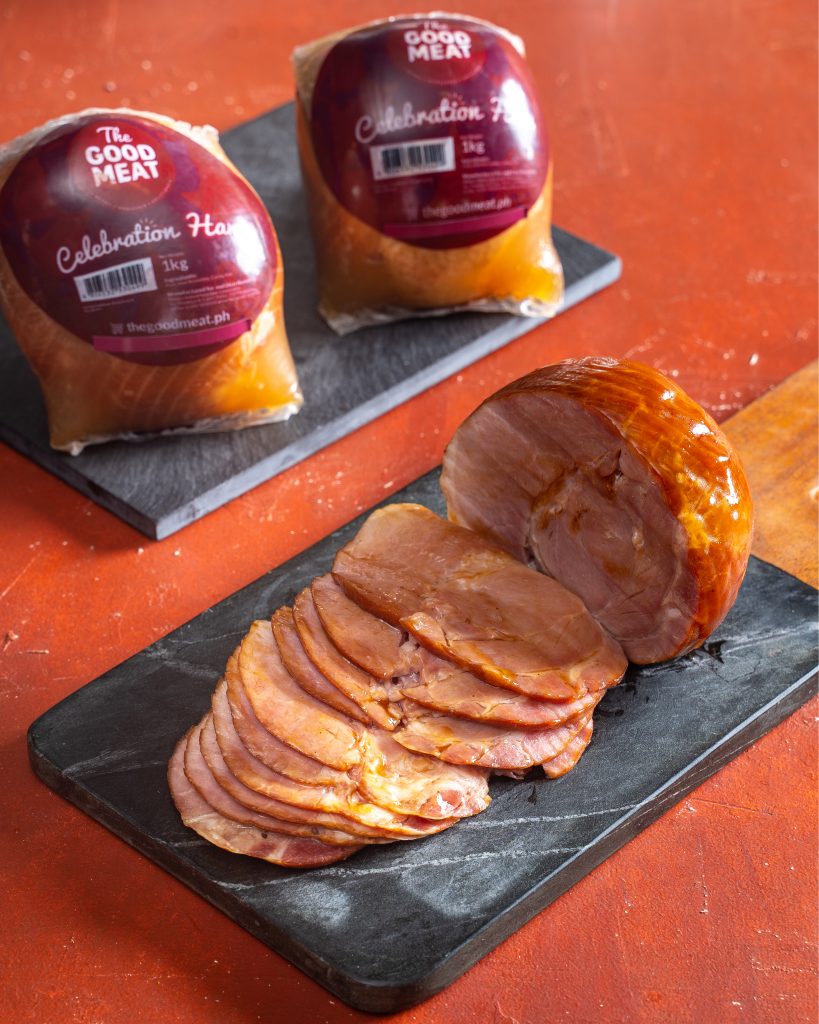
Traditionally known as Yule Ham, Christmas Ham’s history was adopted from other winter celebrations. It started when Germanic pagans considered Ham as part of their Yuletide celebrations, a ceremony honoring the mythical Wild Hunt along with praying for fertility, harvest and good weather.
As Christianity spreads worldwide, Christmas trees, including Christmas Hams also influence us.
Today, Noche Buena wouldn’t be complete without Christmas Ham as the centerpiece. It is one of the classic dishes symbolizing festivity, thanksgiving, and warmth.
While you can serve the Christmas Ham straight to your table, you can also explore unique twists to feed your family and wow your holiday guests! Try Root Beer Glazed Ham, Ham and Cheese Frittata, Slow Cooker Ham, or Elevated Baked Ham.
Check out our premium Christmas ham and infuse a touch of gourmet delight into your festive celebrations.
Source: Yummy.ph
Indulge the whole family with the mouthwatering deep-fried pork knuckles, Crispy Pata.
This culinary wonder was invented by Rodolfo Ongpauco, the son of the Barrio Fiesta owner in Caloocan back in the 1950s when he tried to deep fry discarded pork legs.
Since then, Filipino families have included this dish during Noche Buena, especially those who don’t have access to Lechon. This is beyond a great alternative!
There’s no other key reason why Filipino families fell in love with Crispy Pata than its extraordinary taste – golden brown and nice crisp texture on the outside, tender meat on the inside, and the savory taste of combined seasoning (bay leaves, garlic, salt, and star anise).
Source: Yummy.ph
Embutido is another Christmas favorite with Spanish origins. While they refer to it as cured sausages, Filipino Embutido is not cured at all. It is a local version of meatloaf using ground pork with onion, bell pepper, carrots, hard-boiled egg, and raisins. Special recipes include longganisa, cheese or ham as well.
Embutido, also a classic Filipino comfort food, is wrapped in foil, and you can either fry or steam it before eating.
To keep the table more appetizing, nutritious and bright, put some greens on Embutido as side dishes and place them between pure meat dishes such as Crispy Pata, Christmas Ham, or Lechon.
Source: WhatToEat.ph
Noche Buena wouldn’t be the same without red meat on our plate, so cheers to this timeless Filipino stew, Beef Caldereta.
Caldereta came from the Spanish word “caldera”, which means cauldron or a metal pot with a lid and handle used to cook in an open fire. It consists of chuck beef (with a nice amount of fat), beef brisket, ribs, shanks, carrots, bell peppers, and potatoes. If you have a robust palate for spice, you can also add chillies.
There’s no other way to make your Noche Buena even warmer than having this comforting food.
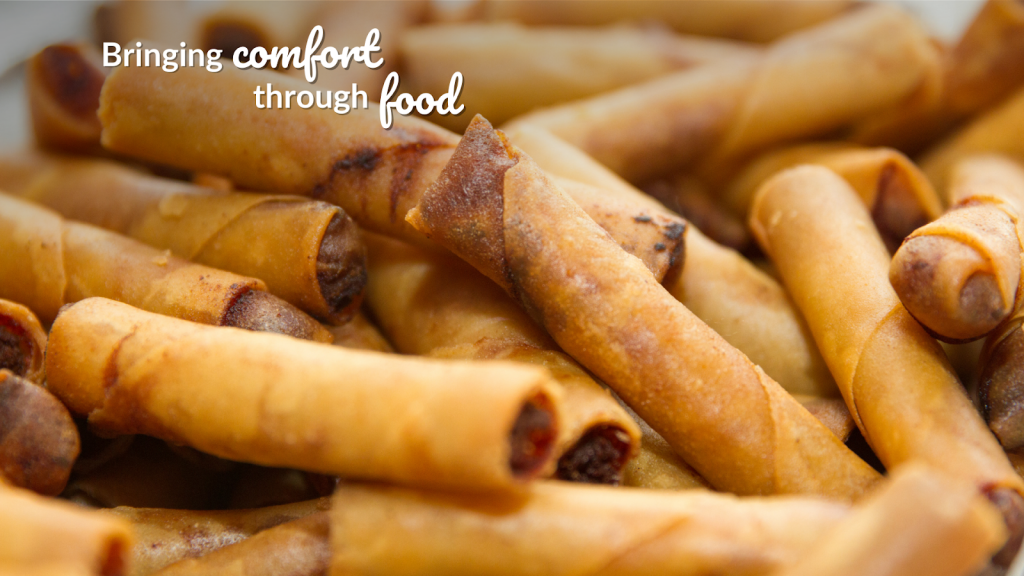
Unarguably, Lumpiang Shanghai is everyone’s favorite party food from typical dining setups, weddings, fiestas, and of course, during Noche Buena.
In fact, Lumpiang Shanghai was named the best Filipino Food according to TasteAtlas, the global map of local dishes and flavors.
Lumpiang Shanghai is a perfect appetizer to set in your Noche Buena main dishes with its crispy exterior and tasty filling. Hence, you can make this as your snack, too – a perfect pair with red wine, a cocktail, or even an ice-cold glass of soda.
Hallowed not only by Christian tradition alone but also by life’s existence, Noche Buena is a meaningful meal and should be celebrated in any way with loved ones.
To keep your meat dishes sumptuous, delectable and worth remembering, always consider fresh and high-quality meat from your trusted meat shop in the Philippines.